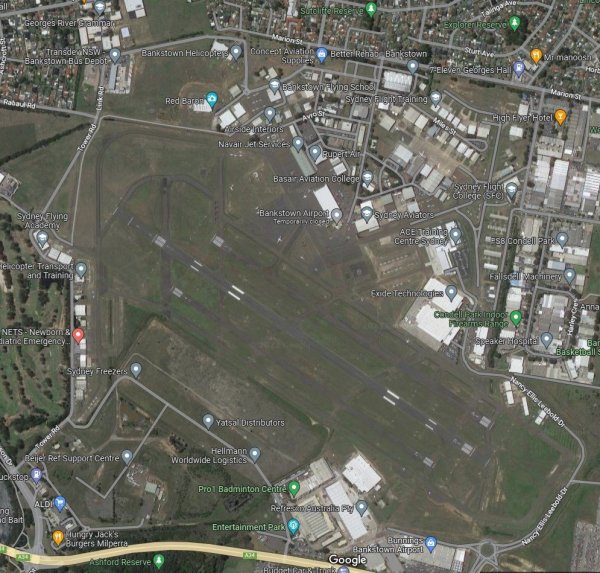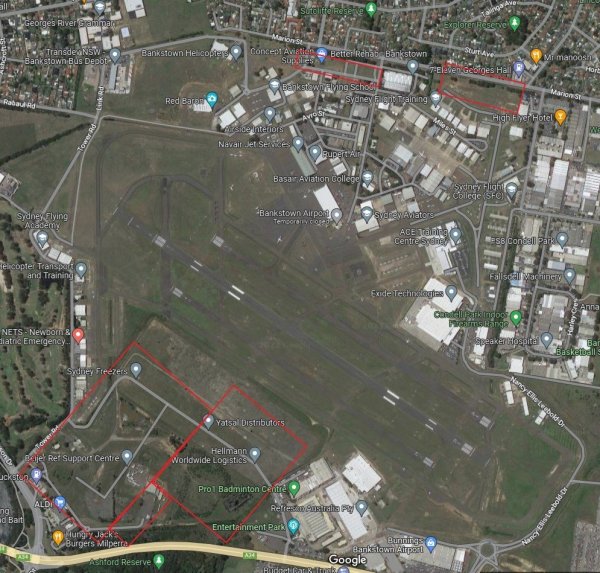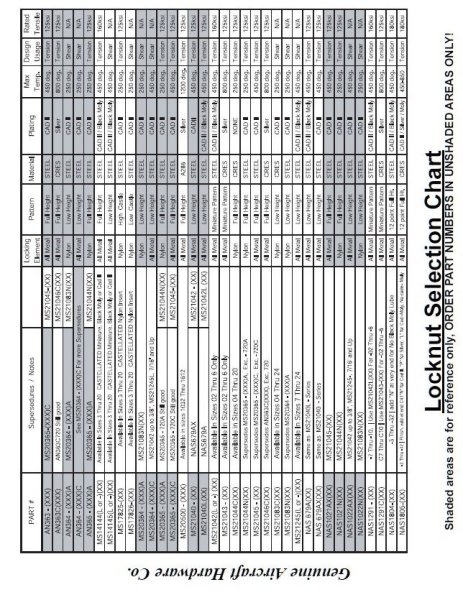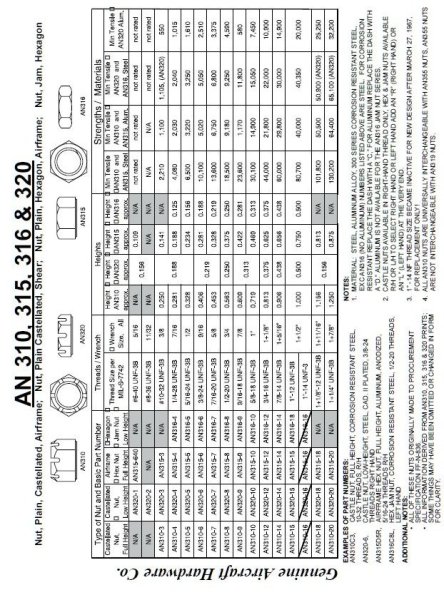-
Posts
5,297 -
Joined
-
Last visited
-
Days Won
78
Content Type
Profiles
Forums
Gallery
Downloads
Blogs
Events
Store
Aircraft
Resources
Tutorials
Articles
Classifieds
Movies
Books
Community Map
Quizzes
Videos Directory
Everything posted by old man emu
-
In this day and age, the thing that will sell a block of land in a new development in a country town is NBN access. That lets certain professions take advantage of high speed communications while enjoying a less hectic environment to love and work in. Another thing is a modern light industrial area to attract businesses that are not tied to the local area for work. I know of a specialist motor vehicle restorer who moved from Sydney to a rural town, without adversely affecting the amount of work he is getting. I recall that some of the sheet metal work on Col Pay's Kittyhawk was done in an industrial unit in Orange.
-

Bankstown Airport - Is it all Doom and Gloom?
old man emu replied to Ben's topic in AUS/NZ General Discussion
When I started, I got 2 hours for that amount. -

Bankstown Airport - Is it all Doom and Gloom?
old man emu replied to Ben's topic in AUS/NZ General Discussion
Let's say that ab initio training takes 40 hours before you get a grade of licence that lets you take passengers into the training area. Of course the number of hours varies due to many factors, mainly surrounding money and time available to put into training. Of that 40 hours, I'd guess 20 would be used doing straight forward circuits and bumps, including first solo and first few solo hours. You could add 5 hours for crosswind instruction and practice. That leaves 15 hours for upper air work, forced landing, steep turns. It seems that a few of the Bankstown schools are popping over to Camden for circuit work, and maybe they do some upper air work. I don't know the exact boundaries of the Camden Training Area, but this mud map shows what I think would be suitable boundaries for one centred on Camden which avoids conflicts with NBW Airport. The area I have shown includes The Oaks Airport which is also a training centre. -

On fuel bulk storage, getting clean fuel and so on.
old man emu replied to old man emu's topic in AUS/NZ General Discussion
Nah. I was being sarcastic. -

Bankstown Airport - Is it all Doom and Gloom?
old man emu replied to Ben's topic in AUS/NZ General Discussion
And it's not only Bankstown that is undergoing change. Just got asked to circulate this: From: AAC <[email protected]> Date: Thu, 6 Apr 2023 at 10:49 Subject: Closure of RWY 04L/22R at Archerfield Airport To: Dear Archerfield Airport Community Members, We are writing to inform you about the upcoming closure of Runway 04L/22R at Archerfield Airport. The closure is scheduled to take place between 18 April and 1 August and from 14 September to 27 September. This closure is required to accommodate the crane operations for the development of future airport infrastructure. The cranes used in the construction work infringe the Obstacle Limitation Surfaces (OLS) and will be equipped with flashing red obstacle lighting during daylight hours. Furthermore, the cranes will be lowered during hours of darkness and under low visibility conditions to ensure the safety of aircraft and helicopter operations. We understand that this closure may cause some inconvenience to your operations, and we apologise for any inconvenience caused. However, we would like to assure you that every effort will be made to minimize the impact of this closure on your operations including the runway will be open on the weekends and when the crane is not required for any reason. Please note that two NOTAMs will be issued relating to the obstacle crane's level of infringement and the closure of Runway 04L/22R due to the crane operations. We advise you to plan your operations accordingly and to check for the latest NOTAMs related to the closure. If you have any questions or concerns regarding this closure, please do not hesitate to contact us. We appreciate your understanding and cooperation during this time. Thank you for your attention to this matter. Best regards, AAC Team -

Bankstown Airport - Is it all Doom and Gloom?
old man emu replied to Ben's topic in AUS/NZ General Discussion
Australian Aviation Museum - officially opened by Paul Keating - closed and dispersed because a volunteer organization could not afford the rent. Australian Aip Props - owner retired, building resumed. Clamback & Hennessy - exorbitant rent + retirement - building pulled down. Massive warehouse for TOLL Transport. Another massive building for the NSW Police Airwing. The rents are so high that even CASA moved its offices to a high rise beside Central Railway Station in the Sydney CBD. At least there's a Bunnings, Maccas, Hungry Jacks KFC and Aldi, and if you want mogas there's a BP servo. -

On fuel bulk storage, getting clean fuel and so on.
old man emu replied to old man emu's topic in AUS/NZ General Discussion
Well, thanks for the Late Edition news. I might as well take the one I bought back since it only has a flow rate of 13.25 litres per minute, meaning it would take 1 minute and 30 seconds to filter 20 litres of fuel, which came from a brand new underground bulk tank and was carried 50 kms in a clean container. -
As a traffic accident investigator, I soon learned a tad about the physiology of memory formation in the brain. It is not instantaneous, taking a few minutes for all the neurological and chemical reactions to take place. to create the memory. Therefore, if trauma occurs, the process is aborted and no memory is made. Try as one might, you can't recall what is not there in your memory. So for a pilot to describe minutiae seconds before suffering trauma, makes me sceptical. I often wonder what our brains are doing when we are driving on a regular journey, say coming home from work, or on an hours' log run that we do often, and we can't remember passing landmarks, or we suddenly realise that we are further along the way than we thought. A mate of mine called it the TIBMIN situation - thumb in bum, mind in neutral.
-

Bankstown Airport - Is it all Doom and Gloom?
old man emu replied to Ben's topic in AUS/NZ General Discussion
An "aircraft movement" for statistical purposes is either a takeoff or a landing. They don't reflect the number of individual aircraft using an aerodrome. So, a student pilot doing circuits and bumps will create six takeoffs and landings in an hour. That's 12 movements by one plane in one hour. So to say that movements have not changed is not a reflection on the vibrancy of an aerodrome, This is what Bankstown looked like about 10 years ago: The red areas on this view are the non-aviation areas of the airport today: Since the Government leased to aerodrome to Big Business, the North/South runway has been eliminated. The general parking area to the top right is now non-aviation industrial units, and the area to teh west of it is currently being prepared for the building of more of the same. Landing fees and parking fees make the place unattractive to private owners. Because of the hike in rents to "commercial equivalent" aviation support businesses such as Hawker-Pacific spares and engine shop as well as Aviall spares have left. One of the two propeller repair businesses has closed. As soons as a business's lease needs to be renewed, the rents demanded skyrocket. If business which built its premises before the Commonwealth handed over the head lease of the aerodrome to Big Business closes down, the owner of building can't sell it to a new business. The building becomes the property of the head leaseholder with no compensation. There goes the superannuation of the self-employed blokes who built those facilities out of their own pockets. Nancy Bird Walton Airport will impact on the associated training area associated with Bankstown. Apart from the NBW Airport control zone limits, massive residential development to the south of it will severely limit airspace for training due to safety reasons, as well as the cries from the newly-arrived NIMBYs in those 21st Century slums. Don't forget that Big Business also has the lease of Camden and the land where Hoxton Park used to be (now a big warehousing site) Public Transport: Fly into Bankstown to attend to business or pleasure in Sydney, and you'll need a taxi or Uber to go any further as there is no public transport. It is 15 minutes by road to the nearest railway station. I'm afraid, Ben, that your optimism is unfounded. Bankstown Airport will become a site fit only for commercial aviation. Maybe Big Business will see that Camden should be developed to promote General Aviation in the training and private sectors, but being located on a floodplain that got swamped last year, it is not likely. It is ironic that the leaders of Big Business, who rely so much on air travel can't see the need to provide for the training needs of the next generation of commercially licensed pilots. -

On fuel bulk storage, getting clean fuel and so on.
old man emu replied to old man emu's topic in AUS/NZ General Discussion
Since I plan to be able to assist pilots to obtain Mogas at the Event in May, I had a look at some videos about the Mister Funnel, and noted some comment from contributors here. So I decided to buy one to have available on the day. First step in finding one was to look if Bunnings have them. They do show them, but when I asked about them I was told they could only be obtained through their Special Orders section. Luckily I happened to find them in a mower shop in Dubbo. The shop had them in three sizes, roughly container sized of 500 ml. 1 litre and 2 litre (don't quote me, that's just a guestimate). After checking the prices at the mower shop, I reckon that the one from Bunnings is the 500 ml one and would be as useless as tits on a bull for aircraft. The price is about $35. The 1 litre one looks to be the most convenient size for control of pouring - cost about $55. The 2 litre one is probably overkill - cost $75. These funnels don't come with a long spout - extra $13 - or bodgy one from another cheap funnel. IMPORTANT SAFETY WARNING! Never seen this on a funnel before, but the Mister Funnel carries the warning: "Static electricity can ignite fuel and its vapours." I'm going to make up an earthing strap to connect the funnel and jerry can to the plane, which should be earthed as well. -
This is a fascinating topic. Petersen have created a very informative website to provide information about the use of mogas in aero engines. https://www.autofuelstc.com/ which is well worth reading through, especially the FAQs in the side columns.
-
I was going through the POH of a friend's plane and found that it had the Paterson (?) STC for Mogas, issued in 1988. (Lycoming O320-E2G). Has anyone heard of, or takes advantage of, this STC? The STC specifies that the fuel to be used had an Anti-Knock Index (AKI) in the low 80s. So what's this AKI? It's a measure of a fuel's resistance to detonation. It is a calculated value based on the average of the values of the Research Octane Number (RON) and its Motor Octane Number (MON). The research octane number (RON) describes the behavior of the fuel in the engine at lower temperatures and speeds, and is an attempt to simulate acceleration behavior. The motor octane number (MON) describes the behavior of the fuel in the engine at high temperatures and speeds – a full-throttle range. The values published by BP for its Ultimate fuel are RON = 98; MON = 86. Therefore the AKI is (98 + 86)/2 = 184/2 = 92 AKI. The values for BP's Regular unleaded are RON = 91; MON = 81, giving an AKI of 86. Since both fuels are ethanol-free, and the Lycoming O320-E2G has a compression ratio of 7:1 is there any point in paying the extra for 98 octane fuel? NOTE: The STC advises that if unleaded Mogas is used, a lead additive is also used. This can be achieved by using Avgas for 10% of each 100 hours' running. The Avgas can be mixed with the Mogas, but the mixture must be described ar Mogas.
-

Flight optimisation by altitude and vectors
old man emu replied to Ian's topic in Aircraft General Discussion
Ian, You sound as though the Force of mathematics is strong in you. I appreciate that. However, I wonder how many of those who read your post have a clue what the Unit Circle is. I do, but for them it might be a number of high rise residences laid out on a round ground plan. That wind problem is depicted visually on the sliding scale of a Jeppo at the start of the calculation phase of flight planning, which makes it clear to most people. I wonder how many people, when doing a flight plan seek the answer to, "If the forecast winds are relatively correct and remain so during the period of my flight, what sort of crosswind can I expect when I arrive? And another useful help the Jeppo wind slide gives: If I'm heading ddd degrees, and the noise stops , which way should I be looking to head so that I set up my Final direction to land into wind as much as possible. -

Flight optimisation by altitude and vectors
old man emu replied to Ian's topic in Aircraft General Discussion
The battery doesn't go flat on a whizz wheel, and they still work after you from them on the ramp. Let's use the example of an aircraft flying straight and level on a known heading, and a known airspeed, and the heading and speed of the air mass it is encountering are also known. That sets up a 2-Dimensional system of vectors, which could be represented by coordinates (x, y) with appropriate identifying subscripts. Note I said that the aircraft was flying straight and level, thereby eliminating the need to consider the third dimension (vertical displacement) it has no speed of direction in his example. So, given that the vectors of the aircraft and wind can be considered as the sums of their vectors in the x and y directions, how can you calculate, in your head, the resultant vector since that calculation involves the use of the values of sine and cosine of the two headings? -

Flight optimisation by altitude and vectors
old man emu replied to Ian's topic in Aircraft General Discussion
OK. There is also the airspeed activated timer that begins timing as soon as the aircraft's airspeed is above stall speed and stops when the airspeed goes below. That sort of time measures wheels-up to wheels-down, which is the official Time in Service for an airframe. BUT! BUT! BUT! There is also the manufacturer's TBO which is based on the number of hours that the engine is operating: start-up to shut-down. How about we accept that these two systems operate at the same time; that they cause confusion in record keeping, and that it is probably wiser to apply engine time to airframe time. It's probably only after many years that the difference become relevant. -

Flight optimisation by altitude and vectors
old man emu replied to Ian's topic in Aircraft General Discussion
I have to agree that electronic devices and their software make the completion of computations so much easier that mechanical devices like a whizz-wheel. However, both devices are ultimately dependent on the user determining which data to use as values for the variables. As for using a WAC, I think one's choice depends on your style of understanding information. I admit that I understand things best when I see them represented in "written" form. I have more information of a situation by looking at Heading and Wind direction lines on a WAC than I can by other means. Maybe that's a result of my education being conducted before electronic digitisation. Is it that a person born after, say 1975, has had the way their mind works influenced to a great extent by electronic digitisation. The drawback I see is that by having devices to do tasks, fails to provide a person with the basic knowledge behind the operation. Here's an instructional video on how to use a simple calculator. You don't need to watch past teh first calculation to get the point I want to make. Now this does not show what addition actually is. To do that, you need to have real objects. Let's use paper clips. From a container of paper clips, take out some and from those count out three, and put them down together. Then count out six and put them down away from the first three. Now, put the three clips on the pile of six. Now count how many clips there are altogether. You will count nine. That shows that three things added to six things results in your having nine things. Note this very important concept: In the example above I initially used the names of the numbers (three, six and nine), but note that in my last sentence those names can be seen as adjectives describing the word "things", the same way that "paper" together with "clip" describes the object. When we verbalise mathematical tasks, we shorten our speech by only using the adjective, not mentioning the physical thing that the adjective describes. That's why our maths teachers always have to remind us to include the object when quoting our answer - nine paper clips. -
Would you give me the link, please?
-

Flight optimisation by altitude and vectors
old man emu replied to Ian's topic in Aircraft General Discussion
A couple of good conversation points here. The answers depend on what result you are after: Shortest time to get from A to B Minimum registered engine hours for the flight from A to B. Minimum fuel usage 1. Shortest time: Basically, if the wind is directly behind you, distance/speed will be least. So draw the direct route on your chart. Then draw a line parallel to the wind direction. See how far you can fly along the wind direction line before you have to turn off it to a heading to close the triangle to your destination. That is a method to reduce the numbers of hours you write in your logbook. 2. Engine time: Engine time meters (Hobbs meter) are not clocks. They are geared so that R revolutions of the crankshaft = 1 hour. So, it you push the throttle through the firewall, the hour meter will overread compared to clock time. If you use normal cruise power (about 75%) the meter and the clock should show the same. 3. Minimum fuel usage This is determined by two things - engine revs and fuel/air mixture. The first thing to do is to determine what airspeed you want to use to get either 1 or 2 above. If you have a tailwind component that is added to your airspeed to give you your ground, then maybe you could reduce engine revs to reduce the actual airspeed. In other words, use the wind to your advantage. If the tailwind component isn't of use, you could look at altitude to make use of the reduced amount of fuel to produce a chemically correct mixture (leaning out). It was these last techniques that Charles Lindbergh showed the P-38 Lightning pilots so that they could carry out the raid that resulted in the death of Admiral Yamamoto. This technique was used extensively by Japanese navy pilots to enable them to traverse long ocean distances in the A6M (Zero) -

Nuts, bolts and washers. Help please.
old man emu replied to flying dog's topic in AUS/NZ General Discussion
To my mind, that is a secondary, but useful, effect of wiring or pinning a castellated nut. If you have a look where fasteners with a hole in the shank are used they do not usually perform a clamping function. They are usually used for keeping things in place where there is movement, like control surface hinges, or for keeping axle nuts firm against the wheel bearing, but not clamping it against the hub. So there is an allowance for the nut to move in and out for a fraction of the circumference of the shank and a cotter pin prevents the untorqued nut from unwinding itself. Its hard to get the correct torque on a nut while at the same time getting the hole in the shank to line up with a slot in the castellated nut. However, that doesn't apply to bolts with holes in the head of the bolt. These are used where two items are being clamped together and no movement is permitted between the two. In that case, the nut is torqued into place before the head of the bolt is lockwired in such a way as to prevent it unwinding from the nut. Sorry that these are sideways. I can't get them to stay rotated the correct way. -

latest in flying car design
old man emu replied to BrendAn's topic in Aircraft Building and Design Discussion
Never mind the purchase price, think of the overheads (no pun). Twice the registration fees, twice the cost of insurance. And which standard do you use for service and replacement parts - el cheapo car parts because it's a car, or fully certified and traceable aircraft parts because it's an aeroplane? It would be a game man who decided to build an amphibious flying car. -
Any wooden airframe manufacture before the 1950s which included gluing wood together has to be suspect, simply because of the degrading of the glue itself. Casein glue is made from milk proteins. It was used to make strong and robust joints in early aviation, and was ubiquitous in the form of "white glue" but fell out of favor due to its susceptibility to attack by bacteria. That is why a lot of Tiger Moths have had to be rebuilt. It was why the Avro Anson was grounded in the 1950s. (Non-competitive, operational performance may also have played a part). Resorcinol glue, also known as resorcinol-formaldehyde, is an adhesive combination of resin and hardener that withstands long-term water immersion and has high resistance to ultraviolet light. The adhesive, introduced in 1943, has been popular in aircraft and boat construction. Wooden airplane components have long been glued with resorcinol formulations. Uncured resorcinol has a relatively short shelf life of about two to three years, depending on storage temperature. Its use has declined since the 1990s due to the ease of use and versatility of epoxy glues and fillers. Unlike epoxy, it does not have gap filling properties, requiring joints to be close fitting and clamped under pressure to achieve good results. Also it is a two-part formulation that requires accurate measurement of components. Resorcinol was named a substance of very high concern under European Union REACH in 2022 because of its endocrine disrupting properties. Consider the wide variety of woodworking adhesives you can now find easily at hardware stores, or with a bit of searching for more unique types. Here's a description of the various types of glues that can be used in woodworking. Each has different properties, so the choice is a bit of a horses for courses one.
-
Honestly, I don't think the functionaries who push the paper around would be getting on much higher Grades of pay than people in CentreLink or similar. It's only when you get to the higher, more managerial levels that the salary gets above average.
-
I have found it difficult to establish communication with a person working for CASA. I recently went to the CASA office in Sydney for some advice when I was beginning to plan the air display. I wanders around empty corridors before I came across someone. When I explained my need, I was told that whoever could help me wasn't around. At other times I have sent material by email and the only thing I got back quickly was an automated response that my email had been received and had got the "mirror treatment" - someone would look into it. Admittedly, when I did get an email back with someone's name and phone number, I had a pleasant interaction. The communication problem I had with the application for air display was that I started dealing with Brisbane, then it went to Adelaide, then to Canberra. I was contacting CASA during summer, so Brisbane was an hour behind my time. Adelaide was its usual 30 minutes behind, and Canberra was in a time zone of its own, not known to the rest of humanity.
-
He signs it. You send it. You wait. And wait. And wait, o by the tie your get a reply from CASA, it has expired and you have to get your GP to do another medical.











